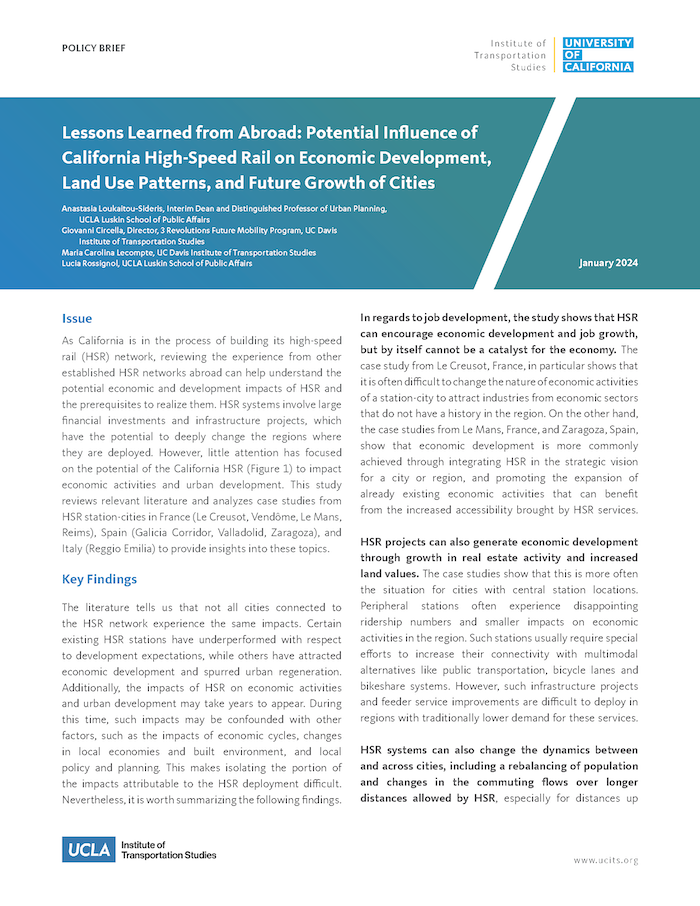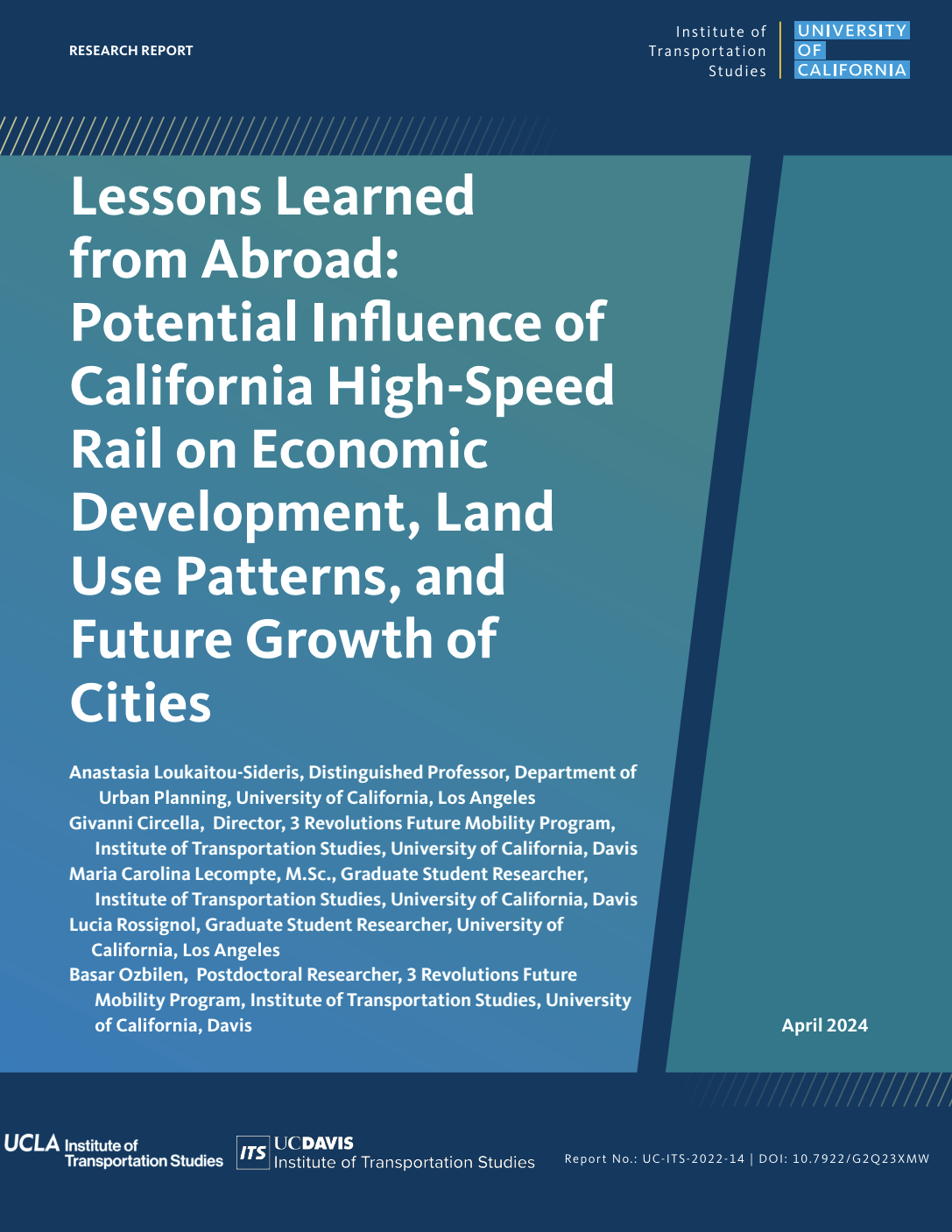Project ID:
LA2107Status:
OngoingFunding Source:
Statewide Transportation Research ProgramProject Description
New transportation networks facilitate mobility and may also spur economic development. This has been the case with the introduction of railways and automobiles, and the construction of railway and highway networks in the late 19th and mid-20th century, respectively. Over the past decades, a new transportation technology — high-speed rail (HSR) — has brought a profound impact on urban-regional accessibility and intercity travel across Europe and East and South-East Asia. But the economic and spatial impacts of HSR have been varied and are largely contingent on a variety of factors, as well as local planning and policy. As California is in the process of building its own HSR network, it is important to review the experience of established HSR networks abroad and understand the possible economic effects that HSR can bring to regional and local economies, and their prerequisites. While the impacts of California’s plan on the direct creation of jobs in local markets (e.g., construction sector) and on the travel sector (e.g., forecasts for HSR travel demand) have been investigated, the possible indirect impacts (e.g., on land values, tourism, firm location, and local and regional development) have not gathered enough attention. This research proposal attempts to fill this gap.
Publications

Anastasia Loukaitou-Sideris (PI)
Program Area(s):



